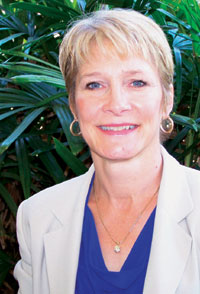Parsing the Data: Bob Jessell
- Company: Central Valley Builders Supply, Napa, Calif.
- Tenure with company: 29 years
- 2007 gross sales: $60 million
Bob Jessell starts each morning the same way: with The Wall Street Journal and a look at Central Valley Builders Supply’s accounts. That’s when work starts to vary, because changes in those numbers help chart the day’s course.
“There are always trends that tell you where something is heading,” says Jessell, CFO of the dealer, whose location among the vineyards of California’s Napa Valley makes it a big supplier of irrigation equipment as well as lumber. He calls himself a behind-the-scenes guy, assessing risk and balancing risk against profitability.
Jessell keeps an eagle eye out for trends externally and internally because he’s determined not to be caught unawares. He knows that profitability takes planning. “We can’t be reactionary,” he says.
What helps Central Valley manage downturns in the market is the company’s decision to be a source for all types of builders, from remodelers to custom builders, rather than specialize, Jessell says. The operative word there is manage, not avoid. In 2007, sales at Central Valley dropped 30% from its reported $85 million in 2006.
“In easy times, we were just figuring out how to bring in enough material to sell to customers,” says Jessell. “Now, I have to run this business with less sales, and figure out how to keep it going.”
To do that, Jessell parses every profit and loss statement. “We are not waiting for a monthly P&L to come out,” he says. “We do it every time payroll comes out. We’ve sold vehicles, we’ve sublet buildings. Every year we lower our inventories. And we keep our outside law firms busy, collecting on debts.”
Jessell says one of the hardest parts of his job is trying to come up with corrective tools to help the various departments get their work done efficiently–and cost-effectively–”rather than saying, ‘these are our standard tools, use ’em.’ Same thing with customers. It doesn’t do to fight with them, so we try to look at it as they look at it, fix it, and take care of the damn problem,” he says.
Jessell says Central Valley is trying to lower its inventory again this year, “and we’re looking at every item of each SKU.” He is training his sights on obsolete inventory, those items that haven’t sold in 90 days. “Our obsolete inventory runs 7% to 8%,” he says, “and that’s a lot of money to lose.”
Jessell calls inventory management key to an effective operation. “We push hard to have the right inventory,” he says. “You can’t afford not to have roofing, and 2x4s, and drywall, but something you sell one or two of a month, well, that’s all you need in stock. You don’t need 10. Your computerized record of [past] sales will tell you what you need to have on hand. We don’t need vendors telling salespeople what to buy.”

